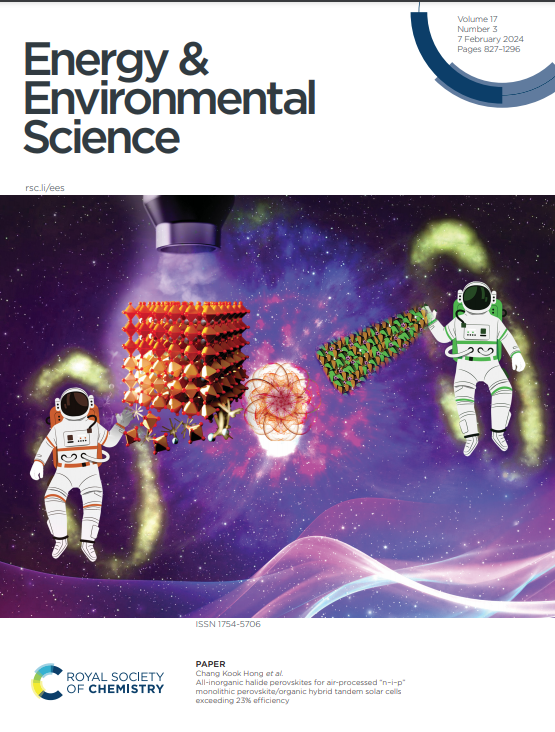Mg2+ Initiated in-situ Polymerization of Dioxolane Enabling Stable Interfaces in Solid-State Lithium Metal Batteries
IF 32.4
1区 材料科学
Q1 CHEMISTRY, MULTIDISCIPLINARY
引用次数: 0
Abstract
In situ polymerized solid-state polymer electrolytes (SPEs) have attracted much attention due to their good machinability and excellent interface contact with electrodes. However, the undesirable stability to lithium metal and high-voltage electrodes hinders their application in high energy density solid-state lithium batteries. Herein, a poly(1,3-dioxolane) composite SPE possessing high interfacial stability with both lithium metal anode and high voltage cathode was fabricated via in-situ polymerization initiated by a Mg2+-containing montmorillonite filler. The strong coordination between Mg2+ and anions of lithium salts not only improves the antioxidant stability of the polymer chains, but also optimizes the lithium ion coordination structure and constructs robust MgF2-containing interphases on both anode and cathode. As a result, the composite SPE exhibits an improved homogeneous polymer chain distribution, a high lithium-ion transference number of 0.60 and an extended electrochemical window of 5.3 V. The Li/Li symmetric cells exhibit outstanding cycling stability for 6000 hours and the Li/LiNi0.8Co0.1Mn0.1O2 cells demonstrate excellent rate capability and cycle stability over 500 cycles. This work provides a promising pathway for the SPEs toward practical high energy density solid-state batteries.求助全文
约1分钟内获得全文
求助全文
来源期刊

Energy & Environmental Science
化学-工程:化工
CiteScore
50.50
自引率
2.20%
发文量
349
审稿时长
2.2 months
期刊介绍:
Energy & Environmental Science, a peer-reviewed scientific journal, publishes original research and review articles covering interdisciplinary topics in the (bio)chemical and (bio)physical sciences, as well as chemical engineering disciplines. Published monthly by the Royal Society of Chemistry (RSC), a not-for-profit publisher, Energy & Environmental Science is recognized as a leading journal. It boasts an impressive impact factor of 8.500 as of 2009, ranking 8th among 140 journals in the category "Chemistry, Multidisciplinary," second among 71 journals in "Energy & Fuels," second among 128 journals in "Engineering, Chemical," and first among 181 scientific journals in "Environmental Sciences."
Energy & Environmental Science publishes various types of articles, including Research Papers (original scientific work), Review Articles, Perspectives, and Minireviews (feature review-type articles of broad interest), Communications (original scientific work of an urgent nature), Opinions (personal, often speculative viewpoints or hypotheses on current topics), and Analysis Articles (in-depth examination of energy-related issues).
 求助内容:
求助内容: 应助结果提醒方式:
应助结果提醒方式:


